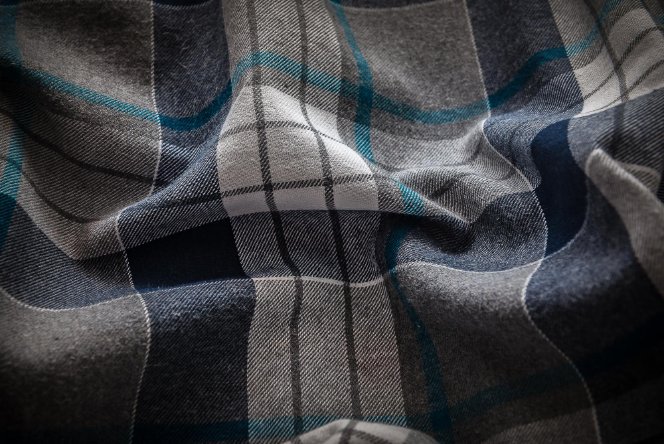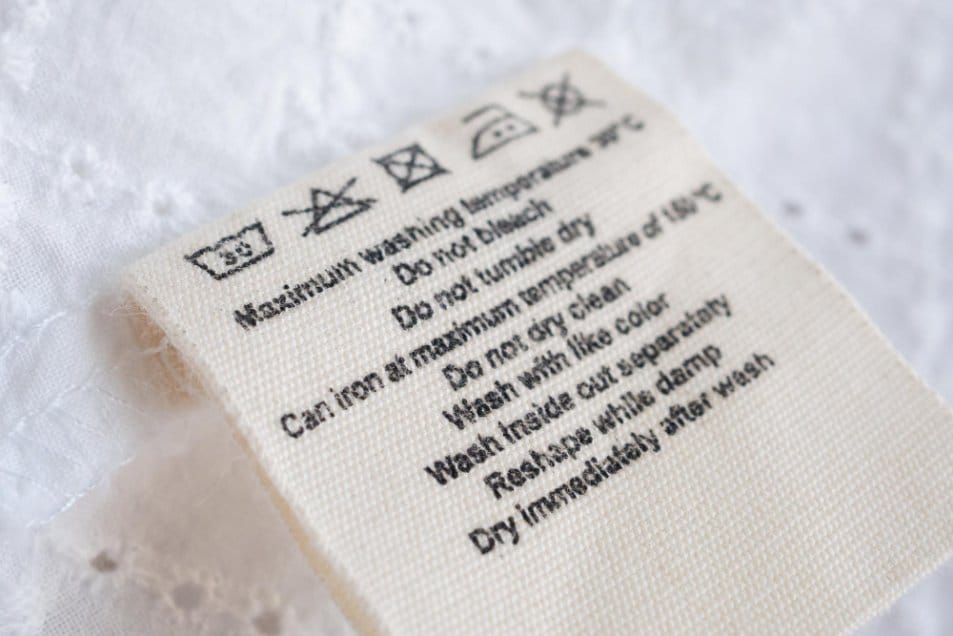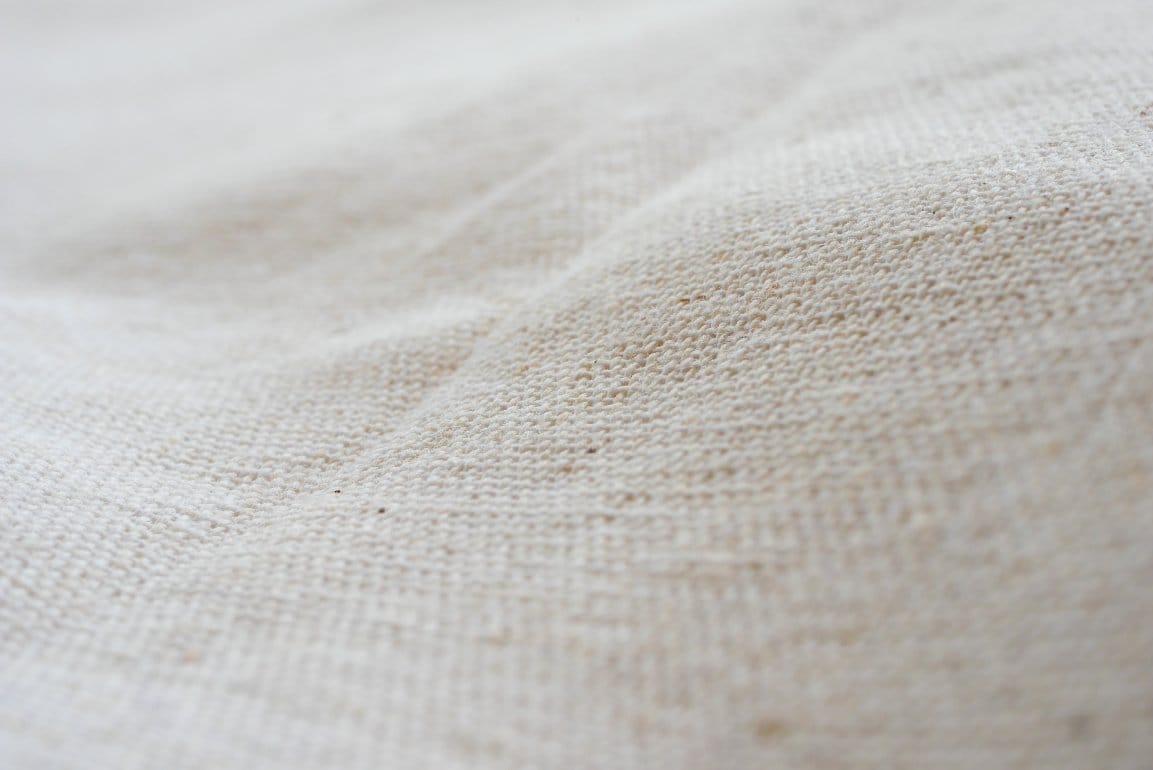Your ultimate resource for understanding, choosing, and caring for flannel cotton fabric
Table of Contents
- What is Flannel Cotton Fabric?
- History and Evolution of Flannel
- Types of Flannel Fabric
- Quality Specifications and Technical Details
- Flannel vs Regular Cotton: Key Differences
- Modern Applications and Uses
- Sustainability and Ethical Production
- How to Choose Quality Flannel
- Care and Maintenance Guide
- Common Questions Answered
- Frequently Asked Questions
What is Flannel Cotton Fabric?
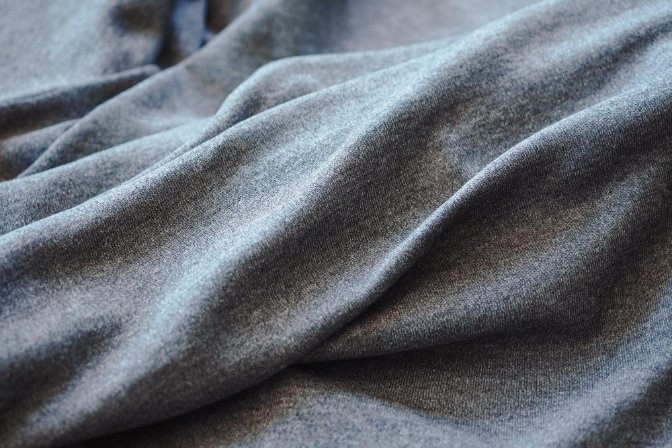
Flannel cotton fabric is a soft, medium-weight textile known for its signature warm and fuzzy texture. Unlike regular cotton fabric, flannel undergoes a special brushing process that lifts the fibers, creating a plush surface that traps air for natural insulation.
Quick Definition: Flannel is a brushed cotton fabric that feels soft against the skin and provides excellent warmth retention without being bulky. It’s the fabric that makes your favorite cozy shirt or winter bed sheets so comfortable.
The fabric gets its cozy feel from a mechanical brushing process that occurs after weaving. Workers use rotating metal brushes to gently lift fibers from loosely spun yarns, creating the characteristic “nap” that gives flannel its fuzzy texture and insulating properties. This process, similar to sustainable cotton production methods, requires specialized equipment and skilled craftsmanship.
What is Flannel Fabric Called in Different Regions?
In the UK: The term “flannel” traditionally refers to a washcloth or face cloth. The fabric we know as flannel is often called “brushed cotton” or “winceyette” for lighter weights.
In the US: “Flannel” specifically refers to the brushed cotton fabric used for clothing and bedding. The term has become synonymous with plaid patterns, though flannel can come in any design.
Globally: Other names include “flannelette” (lighter weight versions), “brushed cotton,” and in some regions, “cotton flannel” to distinguish it from wool flannel.
Is Flannel Natural or Synthetic?
Traditional flannel is made from natural fibers, primarily 100% cotton. However, modern flannel can also be:
- 100% Cotton: The most common and preferred type
- Cotton blends: Mixed with small amounts of polyester for durability
- Synthetic flannel: Made entirely from polyester (less breathable)
- Wool flannel: Made from wool fibers (warmer but less common for everyday use)
History and Evolution of Flannel
Flannel’s story begins in 16th-century Wales, where artisans crafted warm fabrics from local wool. Originally called “Welsh cotton,” this early flannel provided essential warmth for harsh mountain climates. The name likely comes from the French “flanelle” or German “flanell,” both meaning a soft woolen fabric.
From Wool to Cotton: The Great Transition
The Industrial Revolution transformed flannel production. By the 1700s, European textile hubs had refined the manufacturing process, and the fabric gained popularity during America’s Civil War for military uniforms due to its warmth and affordability.
A pivotal moment came in 1889 when Detroit entrepreneur Hamilton Carhartt established specialized flannel mills, making the fabric accessible to civilians. This shift coincided with the transition from wool to cotton fibers, which offered several advantages:
- Easier care and maintenance
- Better affordability for average consumers
- Improved breathability compared to wool
- Resistance to shrinkage when properly treated
Modern Production Innovations
Today’s flannel production combines traditional brushing techniques with advanced quality control. Modern mills use laser-guided systems to monitor fiber alignment while preserving the artisanal essence of the original brushing process.
Types of Flannel Fabric
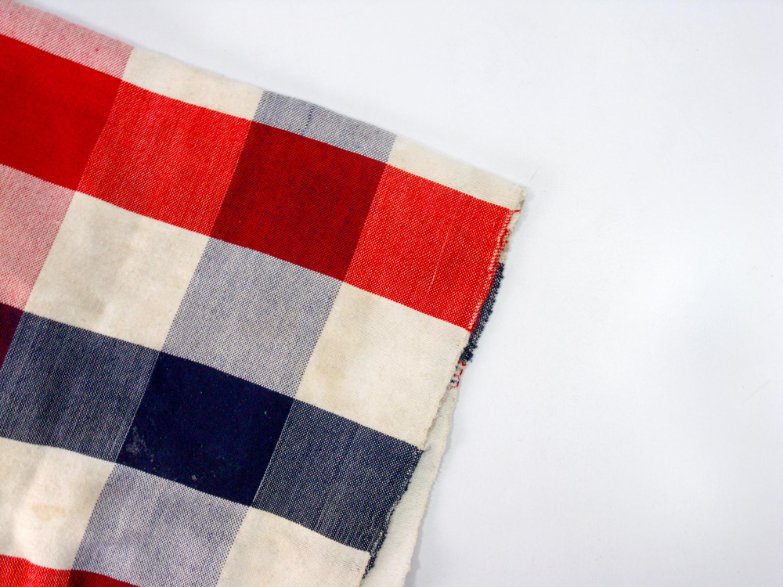
Understanding different flannel types helps you choose the right fabric for specific needs. According to textile experts at Good Housekeeping, each type offers unique characteristics in terms of weight, warmth, and applications.
| Flannel Type | Material | Weight | Best Use | Key Features |
|---|---|---|---|---|
| Cotton Flannel | 100% Cotton | 4-8 oz/sq yd | Clothing, bedding | Soft, breathable, easy care |
| Baby Flannel | Soft cotton | 3-4 oz/sq yd | Children’s clothing | Lightweight, extra soft |
| Diaper Flannel | Stout cotton | 5-6 oz/sq yd | Cloth diapers, burp cloths | Double-napped, absorbent |
| Ceylon Flannel | Cotton-wool blend | 6-7 oz/sq yd | Winter clothing | Extra warmth, durable |
| Flannelette | Light cotton | 3-4 oz/sq yd | Lightweight clothing | Single or double nap |
What’s the Difference Between Cotton Flannel and Flannelette?
While often used interchangeably, there are subtle differences:
- Cotton Flannel: Heavier weight (4-8 oz), typically double-brushed, used for winter clothing and bedding
- Flannelette: Lighter weight (3-4 oz), often single-brushed, used for pajamas and lighter applications
Regional Note: In some countries, “flannelette” refers specifically to brushed cotton fabric, while “flannel” may refer to the wool version.
Quality Specifications and Technical Details
Unlike other fabrics measured by thread count, flannel quality is determined by weight, measured in grams per square meter (GSM) or ounces per square yard (oz/sq yd).
Lightweight
3-4 oz/sq yd
90-120 GSM
Summer flannel, pajamas, baby clothes
Medium Weight
5-6 oz/sq yd
140-170 GSM
Year-round shirts, light bedding
Heavyweight
7+ oz/sq yd
170+ GSM
Winter clothing, premium bedding
| Weight Category | GSM Range | Oz/Sq Yd | Warmth Level | Best Climate | Typical Price Range |
|---|---|---|---|---|---|
| Ultra-Light | 80-100 GSM | 2.5-3 oz | Low | Hot summer, AC environments | $15-25/yard |
| Lightweight | 100-130 GSM | 3-4 oz | Low-Medium | Spring, fall, cool summer nights | $20-35/yard |
| Medium Weight | 130-170 GSM | 4-5 oz | Medium | Cool weather, year-round use | $30-50/yard |
| Heavyweight | 170-220 GSM | 5-7 oz | High | Cold winter, mountain regions | $45-75/yard |
| Extra Heavy | 220+ GSM | 7+ oz | Very High | Extreme cold, arctic conditions | $60-100/yard |
Key Quality Indicators
What to Look for in High-Quality Flannel:
- Weight: Minimum 170 GSM (5 oz) for durability and warmth
- Double-brushed construction: Brushed on both sides for maximum softness
- Tight weave: Prevents pilling and extends fabric life
- Premium cotton: Long-staple cotton fibers for better durability
- Color consistency: Even dye distribution without streaking
- Reinforced construction: Triple flat-felled seams in finished garments
Country of Origin Matters
The best flannel typically comes from regions with long textile traditions:
- Portugal: Known for exceptionally soft flannel from long-staple cotton
- Germany: Produces dense, durable flannel with excellent longevity
- England: Traditional flannel manufacturing with consistent quality
How Can You Tell if Flannel is Good Quality?
Quality flannel has several telltale characteristics you can identify by touch and inspection:
The Touch Test: High-quality flannel feels substantial in your hand. Cheap flannel feels thin and flimsy, while quality flannel has weight and density that suggests durability.
- Thickness and density: Quality flannel feels thick and substantial
- Uniform nap: The fuzzy texture should be consistent across the fabric
- Color richness: Deep, vibrant colors indicate quality dyes
- Minimal shedding: High-quality flannel won’t leave fibers on your hands
- Even weave: Look for consistent thread spacing with no loose threads
Flannel vs Regular Cotton: Understanding the Differences
Many people wonder about the difference between 100% cotton and 100% cotton flannel. The key lies in the finishing process and weave structure.
| Feature | Regular Cotton | Cotton Flannel |
|---|---|---|
| Surface Texture | Smooth, flat weave | Brushed, fuzzy nap |
| Warmth | Moderate | High insulation |
| Weight | 2-6 oz/sq yd | 4-8 oz/sq yd |
| Breathability | Highly breathable | Good, but less than regular cotton |
| Wrinkle Resistance | Moderate to high wrinkles | High wrinkle resistance |
| Shrinkage Risk | Moderate to high | Low with proper care |
| Best Season | Spring, summer, fall | Fall, winter, cool nights |
What Does Cotton Flannel Feel Like?
Cotton flannel has a distinctive tactile experience that sets it apart from other fabrics:
- Initial touch: Soft and slightly fuzzy, like a gentle brush against your skin
- Temperature response: Feels warm immediately upon contact
- Texture: Smooth yet textured, with a subtle nap you can feel
- Weight: Noticeably heavier and more substantial than regular cotton
- Flexibility: Drapes well while maintaining structure
Advantages of Flannel
- Excellent warmth without bulk
- Naturally wrinkle-resistant
- Gets softer with each wash
- Durable and long-lasting
- Comfortable against skin
- Good for sensitive skin
Disadvantages of Flannel
- Can be too warm for hot weather
- Takes longer to dry than regular cotton
- May pill if low quality
- More expensive than basic cotton
- Can attract lint and pet hair
- Requires gentle care to maintain softness
Modern Applications and Versatile Uses
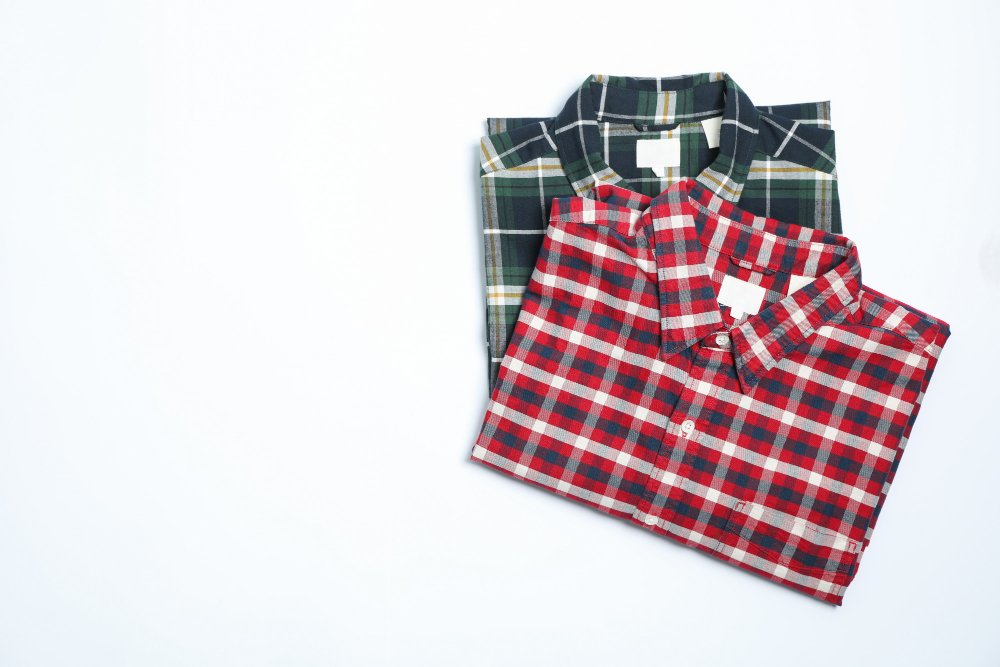
Flannel has evolved far beyond traditional lumberjack shirts and basic pajamas. Today’s designers and manufacturers use flannel in innovative ways across fashion and home décor.
Fashion and Clothing Applications
Modern flannel clothing spans multiple style categories:
- Business Casual: Slim-fit flannel shirts pair perfectly with blazers for professional settings
- Seasonal Layering: Lightweight summer flannel works for cool evenings
- Winter Essentials: Heavy flannel provides warmth without bulk
- Children’s Wear: Baby flannel offers gentle softness for sensitive skin
- Activewear: Moisture-wicking flannel blends for outdoor activities
Home and Interior Applications
Flannel’s versatility extends throughout the home:
- Premium Bedding: High GSM flannel sheets provide luxury warmth
- Acoustic Treatment: Dense flannel helps dampen sound in rooms
- Window Treatments: Flannel curtains add texture while improving insulation
- Upholstery: Durable flannel works for furniture covering
- Craft Projects: Perfect for quilting and sewing projects
Seasonal Considerations
Is Cotton Flannel Good for Summer?
While flannel is traditionally associated with cold weather, lightweight flannel (3-4 oz) can work for summer:
- Air conditioning: Perfect for over-cooled indoor environments
- Evening wear: Provides warmth when temperatures drop after sunset
- Travel: Versatile for varying climates
- Layering piece: Easy to remove when it gets warm
Summer Caution: Avoid heavyweight flannel (7+ oz) in hot, humid conditions as it can cause overheating and discomfort.
How Warm is Cotton Flannel?
Flannel’s warmth depends on several factors:
- Weight: Heavier flannel (170+ GSM) provides excellent insulation
- Brushing: Double-brushed flannel traps more air for better warmth
- Fit: Looser fits allow more air circulation, reducing warmth
- Layering: Works excellently as a mid-layer in cold conditions
Sustainability and Ethical Production
With growing environmental consciousness, understanding sustainable flannel options becomes increasingly important for responsible consumers.
Organic vs Conventional Cotton Flannel
The choice between organic and conventional cotton flannel significantly impacts environmental and health considerations:
| Aspect | Organic Cotton Flannel | Conventional Cotton Flannel | BCI Cotton Flannel |
|---|---|---|---|
| Pesticide Use | None | Heavy pesticide use | Reduced pesticide use |
| Water Usage | Lower overall impact | High water consumption | Improved water efficiency |
| Farmer Safety | Safe working conditions | Chemical exposure risks | Better practices training |
| Traceability | Full supply chain visibility | Limited traceability | No traceability (mass balance) |
| Cost | Premium pricing | Lower cost | Moderate pricing |
Understanding Certification Labels
When shopping for sustainable flannel, look for these certifications:
- GOTS (Global Organic Textile Standard): Ensures organic fibers, environmental criteria, and social criteria throughout the supply chain
- OEKO-TEX Standard 100: Tests for harmful substances in textiles
- EU Ecolabel: Comprehensive environmental standards covering the entire product lifecycle
- Cradle to Cradle Certified: Evaluates materials, manufacturing, and end-of-life considerations
BCI Cotton Concerns: While Better Cotton Initiative aims to improve cotton farming, it has faced criticism for lack of traceability and human rights issues. For maximum sustainability assurance, choose GOTS-certified organic cotton flannel.
Environmental Impact Reduction Tips
- Choose quality flannel that lasts longer
- Buy from brands with transparent supply chains
- Care for flannel properly to extend its lifespan
- Consider second-hand flannel items
- Support brands with take-back programs
How to Choose Quality Flannel: Your Complete Buying Guide
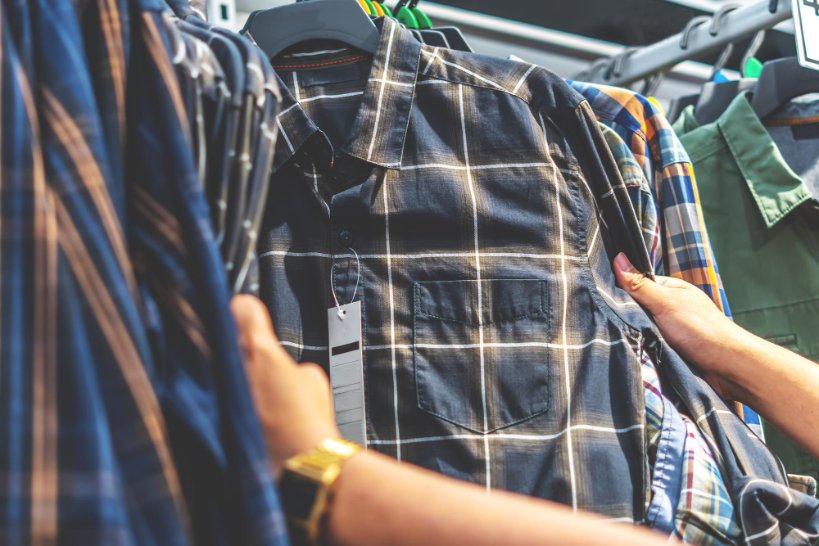
Selecting the right flannel requires understanding your specific needs and quality indicators. This comprehensive guide helps you make informed decisions.
Common Flannel Problems and Solutions
Problem-Solution Guide
Problem: Flannel Pills After Washing
Solution: Choose heavyweight flannel (170+ GSM), wash in cool water, use gentle cycle, and avoid overloading the machine. Pre-wash new flannel before use.
Problem: Excessive Shrinkage
Solution: Pre-wash in cool water, avoid hot temperatures, and buy 10% larger than needed to account for natural shrinkage.
Problem: Flannel Feels Stiff
Solution: Avoid fabric softener, use white vinegar in rinse cycle, and air dry when possible. Quality flannel softens naturally.
Problem: Colors Fade Quickly
Solution: Look for yarn-dyed flannel rather than printed, wash in cold water, and choose reputable brands with quality dyes.
Problem: Too Hot for Climate
Solution: Choose lightweight flannel (3-4 oz), look for breathable weaves, and consider flannel blends with moisture-wicking properties.
Problem: Poor Quality from Online Purchase
Solution: Check GSM specifications, read reviews, verify return policies, and buy from established textile retailers.
Complete Shopping Checklist
Pre-Purchase Inspection Checklist:
- Weight verification: Confirm minimum 170 GSM (5 oz/sq yd) for durability
- Brushing quality: Check for double-brushed construction on both sides
- Fabric feel: Should feel substantial, not thin or flimsy
- Nap consistency: Even, uniform fuzzy texture without thin spots
- Color richness: Deep, vibrant colors without fading or streaking
- Weave tightness: Tight, consistent weave with no loose threads
- Minimal shedding: Little to no fiber release when handled
- Country verification: Prefer Portugal, Germany, or England for premium quality
- Certification check: Look for GOTS, OEKO-TEX, or similar labels
- Care label review: Verify washing instructions match your needs
- Return policy: Ensure you can return if quality doesn’t meet expectations
- Brand reputation: Research manufacturer’s textile quality history
Quality vs Price Analysis
| Price Range | Quality Level | Expected Features | Durability | Best For |
|---|---|---|---|---|
| $15-25/yard | Budget | Basic brushing, 120-150 GSM, synthetic blends possible | 1-2 years | Casual use, testing flannel preference |
| $25-45/yard | Good | Single/double brushed, 150-170 GSM, 100% cotton | 3-5 years | Regular clothing, bedding |
| $45-70/yard | Premium | Double brushed, 170-200 GSM, long-staple cotton | 7-10 years | Investment pieces, luxury bedding |
| $70+/yard | Luxury | Organic, GOTS certified, 200+ GSM, artisan crafted | 10+ years | Heirloom quality, sensitive skin, sustainability focus |
Essential Quality Checklist:
- Minimum weight: 170 GSM (5 oz/sq yd) for durability
- Double-brushed construction on both sides
- Even, consistent nap without thin spots
- Rich, vibrant colors without fading or streaking
- Tight weave structure with no loose threads
- Minimal shedding when handled
- Country of origin from reputable textile regions
- Certification labels (GOTS, OEKO-TEX, etc.)
Price vs Quality Guidelines
Understanding pricing helps you identify quality flannel:
- Budget Range ($15-30/yard): Basic flannel, lighter weights, may pill over time
- Mid-Range ($30-60/yard): Good quality, durable construction, suitable for most needs
- Premium Range ($60+/yard): Highest quality, organic options, luxury brands
Red Flags to Avoid: Extremely low prices, thin/flimsy feel, uneven coloring, excessive shedding, or lack of product information about weight and origin.
How to Tell if Flannel is 100% Cotton
Identifying pure cotton flannel requires several checks:
- Label reading: Look for “100% cotton” on care labels
- Burn test: Cotton burns cleanly with ash residue (do this safely with a small sample)
- Feel test: Pure cotton flannel feels natural and breathable
- Water absorption: Cotton flannel absorbs water quickly
- Static test: Pure cotton produces minimal static electricity
Specialty Applications Guide
Is Flannel Good for Sensitive Skin?
Flannel can be excellent for sensitive skin when chosen correctly:
- Choose organic: GOTS-certified flannel contains no harmful chemicals
- Pre-wash thoroughly: Removes any processing residues
- Avoid synthetic blends: Stick to 100% cotton for best skin compatibility
- Test first: Try a small piece against sensitive areas
Sensitive Skin Tip: Baby flannel is often the gentlest option, with extra-soft processing and lighter weight that won’t irritate delicate skin.
Care and Maintenance Guide
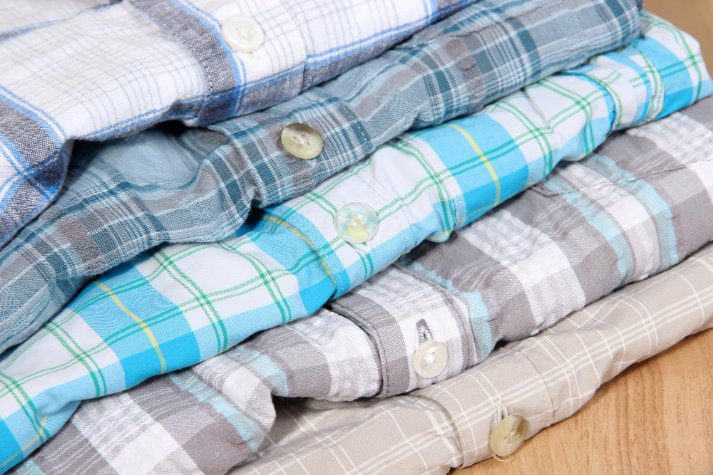
Proper care extends flannel’s life and maintains its signature softness. Unlike other fabrics, flannel actually improves with age when cared for correctly.
Essential Care Instructions
Complete Flannel Care Process:
• Water temperature: 30°C (86°F)
• Detergent: 1/2 normal amount, mild liquid detergent
• Duration: Standard cycle (30-45 minutes)
• Purpose: Remove sizing, prevent excessive shrinkage
• Sort by color and weight
• Check pockets for items
• Turn garments inside out to protect surface
• Avoid mixing with lint-producing fabrics
• Temperature: 30-40°C (86-104°F)
• Cycle: Gentle/Delicate (reduces agitation)
• Load size: 3/4 full maximum
• Detergent: Liquid preferred, powder acceptable
• Add 1/2 cup white vinegar for natural softening
• Skip fabric softener (reduces absorbency)
• Extra rinse cycle if heavily soiled
• Check for detergent residue
• Air dry: Lay flat or hang (preferred method)
• Machine dry: Low heat, remove while slightly damp
• Time: 45-60 minutes for machine drying
• Avoid: High heat, over-drying
• Fold promptly to prevent deep wrinkles
• Store in cool, dry location
• Iron if needed: Low heat, reverse side
• Frequency: Wash every 2-4 wears depending on use
Temperature Guide for Different Flannel Types
| Flannel Type | Wash Temperature | Dry Temperature | Expected Shrinkage | Special Instructions |
|---|---|---|---|---|
| Baby Flannel | 30°C (86°F) | Air dry preferred | 3-5% | Extra gentle cycle, hypoallergenic detergent |
| Lightweight | 30-35°C (86-95°F) | Low heat or air dry | 5-8% | Minimal agitation, avoid overloading |
| Medium Weight | 35-40°C (95-104°F) | Low to medium heat | 6-10% | Standard gentle cycle, vinegar rinse optional |
| Heavyweight | 40°C (104°F) max | Medium heat acceptable | 8-12% | May need longer dry time, check care label |
| Organic | 30°C (86°F) | Air dry preferred | 4-7% | Eco-friendly detergent, preserve certifications |
Shrinkage Prevention and Management
Will 100% Cotton Flannel Shrink?
Yes, cotton flannel will shrink, but the amount depends on several factors:
| Water Temperature | Width Shrinkage | Length Shrinkage | Prevention Method |
|---|---|---|---|
| Cool (30°C/86°F) | 0-1% | 6-8% | Best choice for minimal shrinkage |
| Warm (40°C/104°F) | 1-2% | 8-10% | Acceptable for regular washing |
| Hot (60°C/140°F) | 2-3% | 10-12% | Avoid except for sanitizing |
How to Unshrink Cotton Flannel
If your flannel has shrunk, try this recovery method:
- Soak in cool water: Submerge the garment in cool water with hair conditioner (1 tbsp per quart)
- Gentle stretching: While damp, gently stretch the fabric back to size
- Flat drying: Lay flat on towels, reshaping as it dries
- Steam treatment: Use steam to relax fibers, then gently stretch
Prevention is key: Pre-washing new flannel removes most shrinkage potential. Always follow care labels and avoid high temperatures.
Maintenance and Longevity Tips
How Many Times Can You Wear Flannel Before Washing?
Flannel’s wearing frequency depends on several factors:
- Direct skin contact: 1-2 wears for shirts worn next to skin
- Over layers: 3-4 wears when worn over other clothing
- Activity level: Wash after any sweating or strenuous activity
- Odor test: If it smells or feels dirty, it’s time to wash
Can You Use Fabric Softener on Flannel?
Avoid fabric softener on flannel for these reasons:
- Reduces natural absorbency
- Can make fabric feel stiff over time
- Coats fibers, reducing breathability
- Flannel gets softer naturally with each wash
Better alternatives: White vinegar (1/2 cup in rinse cycle) or air drying for natural softness.
Storage and Seasonal Care
Proper storage maintains flannel quality during off-seasons:
- Clean before storage: Wash and completely dry before storing
- Fold carefully: Avoid tight compression that flattens the nap
- Cedar protection: Use cedar blocks to deter moths naturally
- Occasional airing: Unfold and shake out periodically during storage
Can Flannel be Ironed?
Yes, but flannel rarely needs ironing due to its natural wrinkle resistance. When necessary:
- Use low to medium heat setting
- Iron on the reverse side to protect the nap
- Use steam for best results
- Move the iron gently to avoid flattening the brushed surface
Common Questions Answered
Health and Safety Considerations
Is Cotton Flannel Healthy?
Cotton flannel is generally considered a healthy fabric choice:
- Natural breathability: Allows air circulation to prevent moisture buildup
- Hypoallergenic properties: Pure cotton is naturally hypoallergenic
- Chemical-free options: Organic flannel contains no harmful pesticides or chemicals
- Temperature regulation: Helps maintain comfortable body temperature
- Moisture management: Cotton’s natural absorbency keeps skin dry
Health Tip: Choose GOTS-certified organic flannel for maximum health benefits, especially for bedding and clothing worn close to skin.
Seasonal and Climate Suitability
Is Flannel Only for Winter?
While traditionally associated with cold weather, flannel has year-round applications:
- Lightweight flannel: Perfect for spring and fall temperatures
- Air-conditioned environments: Provides comfort in over-cooled buildings
- Evening wear: Ideal for cool summer nights
- Travel versatility: Adapts to varying climate conditions
Is Cotton Flannel Breathable?
Cotton flannel maintains good breathability despite its warmth:
- Natural cotton fibers allow air circulation
- Brushing process doesn’t eliminate breathability
- Less breathable than regular cotton but more than synthetic alternatives
- Weight affects breathability – lighter flannel breathes better
Comparison Questions
Which is Better: Flannel or Polyester?
Cotton flannel generally outperforms polyester in most categories:
| Factor | Cotton Flannel | Polyester Flannel |
|---|---|---|
| Breathability | Excellent | Poor |
| Natural feel | Superior | Synthetic feel |
| Durability | High with care | Good |
| Cost | Higher | Lower |
| Environmental impact | Biodegradable | Non-biodegradable |
| Care requirements | Moderate | Easy |
Which is Better: Cotton or Flannel?
This comparison depends on your specific needs:
- Choose regular cotton for: Hot weather, formal wear, maximum breathability, crisp appearance
- Choose flannel for: Cold weather, comfort wear, warmth without bulk, casual settings
Technical and Manufacturing Questions
Is Flannel a Thick Fabric?
Flannel thickness varies by type and quality:
- Lightweight flannel: Similar to regular cotton shirt weight
- Medium weight: Noticeably thicker than regular cotton
- Heavyweight flannel: Substantially thick, comparable to light sweater material
- Perceived thickness: Brushed surface makes flannel feel thicker than its actual weight
Is Flannel More Expensive Than Cotton?
Generally yes, due to additional processing:
- Extra manufacturing steps: Brushing process adds cost
- Quality materials: Often uses premium cotton
- Specialized equipment: Brushing requires specific machinery
- Price range: Typically 20-50% more than comparable regular cotton
Where is Cotton Flannel Made?
Quality flannel production occurs globally:
- Traditional centers: Portugal, Germany, England for premium quality
- Large-scale production: China, India, Turkey for volume manufacturing
- Specialty producers: Japan, Italy for high-end fashion flannel
- Domestic production: USA still produces some flannel for domestic market
Frequently Asked Questions
The main difference is in the finishing process. Both are made from 100% cotton fibers, but flannel undergoes a brushing process that lifts the fibers to create a soft, fuzzy surface. This brushing gives flannel its characteristic warmth, softness, and slightly thicker feel compared to regular cotton fabric.
Yes, cotton flannel will shrink, particularly in length (6-12% depending on water temperature). Width shrinkage is minimal (0-3%). To minimize shrinkage, pre-wash new flannel, use cool water (30°C/86°F), and avoid high heat drying. Most shrinkage occurs in the first few washes.
Quality flannel should weigh at least 170 GSM (5 oz/sq yd), have a substantial feel when handled, show even and consistent brushing, exhibit rich colors without fading, and produce minimal shedding. Look for double-brushed construction and tight weave structure. High-quality flannel from Portugal, Germany, or England typically offers superior durability.
Yes, 100% cotton flannel is generally excellent for sensitive skin. Choose GOTS-certified organic flannel to avoid chemical residues, pre-wash thoroughly before first use, and avoid synthetic blends. Baby flannel is often the gentlest option with extra-soft processing. The brushed surface feels gentle against sensitive skin while providing natural breathability.
Flannelette is typically lighter weight (3-4 oz/sq yd) and often single-brushed, making it suitable for pajamas and lighter applications. Cotton flannel is usually heavier (4-8 oz/sq yd), double-brushed on both sides, and used for winter clothing and bedding. Both are made from cotton, but flannel provides more warmth and durability.
No, avoid fabric softener on flannel. It can reduce the fabric’s natural absorbency, make it feel stiff over time, and coat the fibers, reducing breathability. Flannel naturally becomes softer with each wash. Instead, use white vinegar (1/2 cup in rinse cycle) or air dry for natural softness.
Lightweight flannel (3-4 oz/sq yd) can work for summer in air-conditioned environments, cool evenings, or as travel wear. However, avoid heavyweight flannel (7+ oz) in hot, humid conditions as it can cause overheating. For summer use, choose the lightest weight flannel available and consider it for layering rather than standalone wear.
Unlike regular cotton sheets, flannel quality is measured by weight (GSM) rather than thread count. The brushing process makes thread count less relevant. Instead, look for flannel weighing 170+ GSM (5+ oz/sq yd) for good quality. Thread counts for flannel typically range from 80-120, but weight and brushing quality are better indicators of softness and durability.
Conclusion
Flannel cotton fabric represents a perfect blend of comfort, functionality, and versatility that has evolved far beyond its humble Welsh origins. From lightweight summer options to heavyweight winter essentials, understanding flannel’s characteristics empowers you to make informed choices for your specific needs.
Key Takeaways for Smart Flannel Shopping
- Weight matters most: Look for minimum 170 GSM (5 oz/sq yd) for quality and durability
- Double-brushed is superior: Brushing on both sides provides maximum softness and warmth
- Origin indicates quality: Portuguese, German, and English flannel typically offer superior craftsmanship
- Organic certification provides peace of mind: GOTS-certified flannel ensures safety and sustainability
- Pre-washing prevents problems: Always wash new flannel before use to minimize shrinkage
Care Recommendations for Longevity
Proper care transforms good flannel into a long-lasting investment. Use cool water, gentle detergent, and avoid fabric softeners. Remember that flannel actually improves with age when properly maintained, becoming softer and more comfortable over time.
Sustainability Considerations
Choose organic cotton flannel when possible to support environmental sustainability and worker safety. While it costs more initially, the durability and reduced environmental impact make it worthwhile for conscious consumers.
Final Recommendations
- For bedding: Choose 170+ GSM double-brushed flannel from reputable sources
- For clothing: Select appropriate weight for your climate and intended use
- For sensitive skin: Opt for organic, GOTS-certified baby flannel
- For year-round use: Consider multiple weights for seasonal versatility
- For durability: Invest in quality over quantity – good flannel lasts decades
Whether you’re choosing flannel for cozy winter nights, comfortable everyday wear, or sustainable home textiles, this guide provides the knowledge needed to select, care for, and enjoy this remarkable fabric. The combination of traditional craftsmanship and modern innovation ensures flannel will continue warming homes and hearts for generations to come.
Ready to explore more fabric options? Check out our comprehensive guides to Egyptian cotton, cotton poplin, and other natural fabric alternatives to build your textile knowledge further.
Helpful Tools and Resources
Enhance your flannel knowledge and shopping experience with these interactive tools:
- Fabric Weight Calculator – Calculate exact GSM requirements for your projects
- Cotton Care Calculator – Get personalized care instructions for your flannel
- Interactive Fabric Selector Tool – Find your perfect fabric match based on your needs
- Seasonal Fabric Quiz – Discover the best fabrics for your climate

